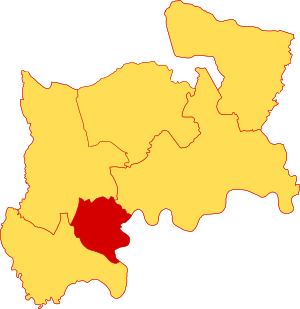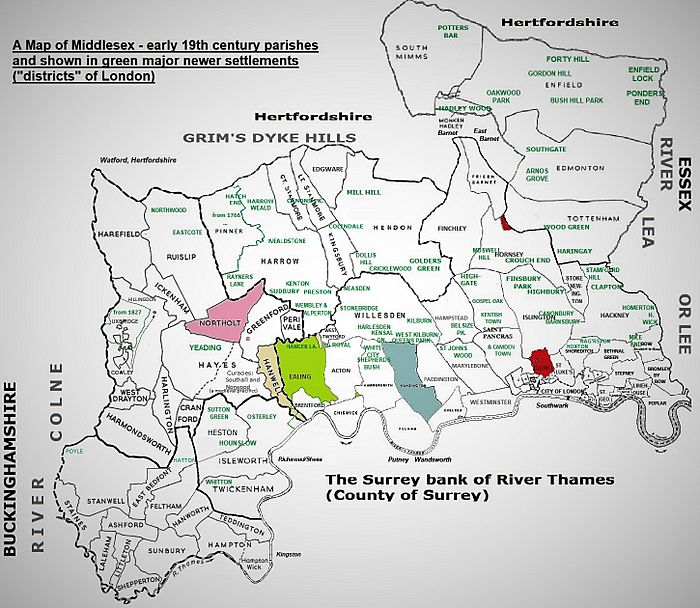Isleworth Hundred facts for kids
The Isleworth Hundred was an old division of land in the historic county of Middlesex, England. Think of a "hundred" as a bit like a modern-day district or area. It was a way to organize land and people in England many centuries ago.
In a very old book called the Domesday Book, written in 1086, this area was known as Hundeslaw Hundred. Today, we would call that "Hounslow Hundred".
Contents
What Was Isleworth Hundred?
The Isleworth Hundred was one of six "hundreds" in Middlesex. It was the smallest of them all. In 1801, the whole county of Middlesex was about 734 square kilometers. The Isleworth Hundred made up about 5% of that area.
The name "Isleworth" comes from old words meaning 'enclosure of Gislhere'. An enclosure was a fenced-off area of land.
Parishes in the Hundred
The Isleworth Hundred included three main parishes. A parish was a local area with its own church and local government. Here are the parishes and their sizes around the 1870s and 1880s:
| Heston | 3720 acres | = 15.1 square kilometres (5.8 sq mi) |
| Isleworth | 3143 acres | = 12.7 square kilometres (4.9 sq mi) |
| Twickenham | 2249 acres | = 9.1 square kilometres (3.5 sq mi) |
Important Places in the Hundred
In the earliest records, all the land in this hundred was part of one large estate, or "manor," based at Syon Abbey. A manor was a big area of land controlled by a lord or a religious group.
Over time, the ownership of these lands changed.
- The land of Heston was passed down through the family of Francis Child. Later, it was owned by the Earl of Jersey. Their family lived at Osterley House, a grand home built by Child in the north-east of Isleworth parish.
- The other two main manors came under the control of the Duke of Northumberland. His family took over the abbey's lands and built Syon House in the east of Isleworth.
The Domesday Book of 1086 called this area "Hounslow Hundred." However, this name was not used again after that. For a long time, Hampton was thought to be part of Hounslow Hundred. But later records showed that Hampton was actually part of Spelthorne Hundred. This was because the Syon Abbey and then the Percy family (the Duke of Northumberland's family) owned land there.
Over the years, smaller communities and villages, sometimes called hamlets, also grew within the hundred. These included:
- Hounslow, which from the 1500s was split between the Heston and Isleworth parishes.
- Whitton in the parish of Twickenham.
- North Hyde in the parish of Heston.
- Sutton in the parish of Heston.
- Lampton in the parish of Heston.
- Worton in the parish of Isleworth.
- Wyke in the parish of Isleworth.
- Scrattage (now part of Osterley) in the parish of Heston.
See also
Other "hundreds" in Middlesex:
- Elthorne
- Spelthorne
- Gore
- Ossulston or Ossulstone
- Edmonton



